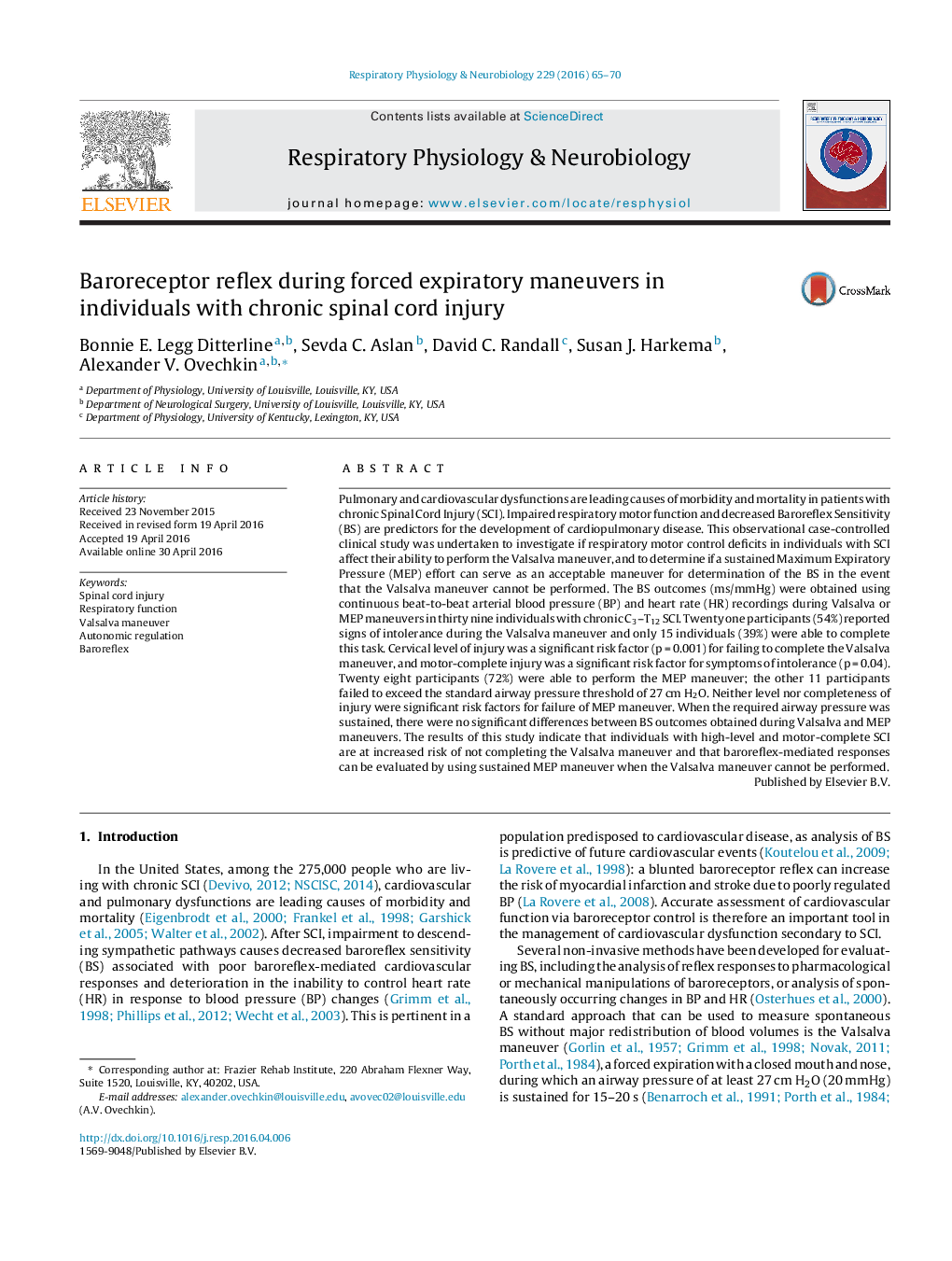| کد مقاله | کد نشریه | سال انتشار | مقاله انگلیسی | نسخه تمام متن |
|---|---|---|---|---|
| 2846681 | 1571301 | 2016 | 6 صفحه PDF | دانلود رایگان |
• We examined baroreflex sensitivity in individuals with chronic spinal cord injury during the forced expiratory tasks.
• These responses were evaluated using beat-to-beat arterial blood pressure and heart rate variability during Valsalva and sustained Maximum Expiratory Pressure (MEP) maneuvers.
• Individuals with high-level and motor-complete SCI are at increased risk of not completing the Valsalva maneuver.
• Baroreflex-mediated responses can be evaluated by using MEP maneuver when the Valsalva maneuver cannot be performed.
Pulmonary and cardiovascular dysfunctions are leading causes of morbidity and mortality in patients with chronic Spinal Cord Injury (SCI). Impaired respiratory motor function and decreased Baroreflex Sensitivity (BS) are predictors for the development of cardiopulmonary disease. This observational case-controlled clinical study was undertaken to investigate if respiratory motor control deficits in individuals with SCI affect their ability to perform the Valsalva maneuver, and to determine if a sustained Maximum Expiratory Pressure (MEP) effort can serve as an acceptable maneuver for determination of the BS in the event that the Valsalva maneuver cannot be performed. The BS outcomes (ms/mmHg) were obtained using continuous beat-to-beat arterial blood pressure (BP) and heart rate (HR) recordings during Valsalva or MEP maneuvers in thirty nine individuals with chronic C3–T12 SCI. Twenty one participants (54%) reported signs of intolerance during the Valsalva maneuver and only 15 individuals (39%) were able to complete this task. Cervical level of injury was a significant risk factor (p = 0.001) for failing to complete the Valsalva maneuver, and motor-complete injury was a significant risk factor for symptoms of intolerance (p = 0.04). Twenty eight participants (72%) were able to perform the MEP maneuver; the other 11 participants failed to exceed the standard airway pressure threshold of 27 cm H2O. Neither level nor completeness of injury were significant risk factors for failure of MEP maneuver. When the required airway pressure was sustained, there were no significant differences between BS outcomes obtained during Valsalva and MEP maneuvers. The results of this study indicate that individuals with high-level and motor-complete SCI are at increased risk of not completing the Valsalva maneuver and that baroreflex-mediated responses can be evaluated by using sustained MEP maneuver when the Valsalva maneuver cannot be performed.
Journal: Respiratory Physiology & Neurobiology - Volume 229, 15 July 2016, Pages 65–70
